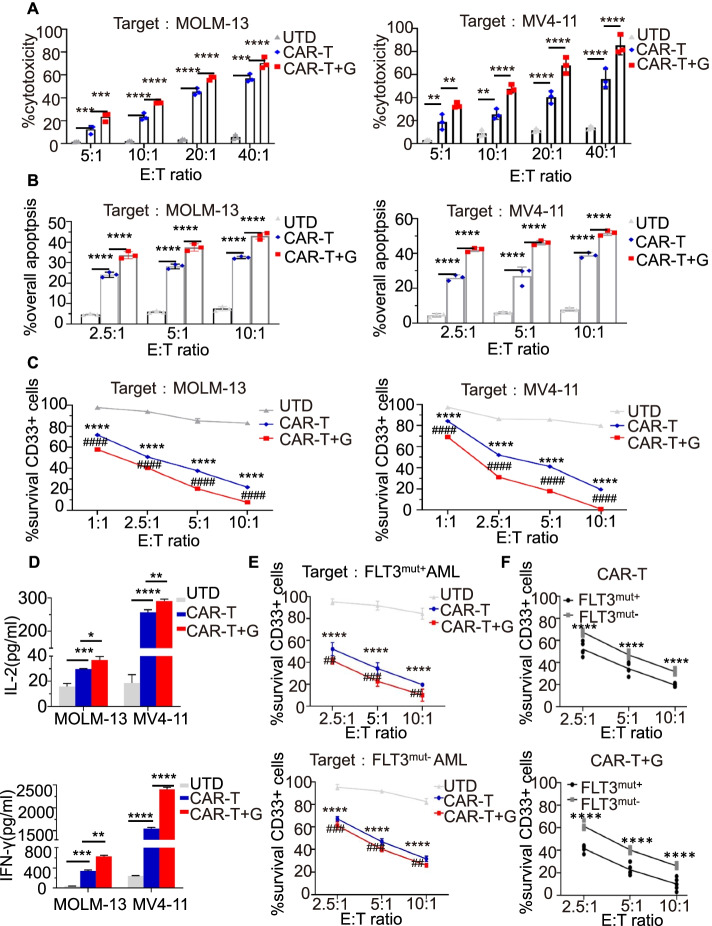Fig. 2.
Gilteritinib enhanced the ability of FLT3scFv/NKG2D-CAR T cells in killing AML cells in vitro. A Special cytotoxicity of UTD, FLT3scFv/NKG2D CAR T alone or combined with gilteritinib against AML cells (MOLM-13 and MV4-11) using LDH cytotoxicity assay (4-h co-culture with 10,000 target cells/well). B Annexin V/PI apoptosis assay (48-h co-culture with 2 × 105 target cells/well) showing FLT3scFv/NKG2D-CAR T cells had potent and specific cytotoxicity and apoptotic effects against MOLM-13 and MV4-11 cells. These effects were enhanced by pretreatment with the FLT3 inhibitor gilteritinib. C Flow cytometry analysis showing the percentage of surviving CD33 + AML cells (24-h co-culture of MOLM-13 and MV4-11 with 25,000 cells/well) significantly reduced in the FLT3scFv/NKG2D-CAR T cell group compared with the UTD group in a dose-dependent manner, and the gilteritinib combination treatment group showed a further decrease in the percentage of residual CD33 + AML cells. D ELISA analyses showing IL-2 and IFN-γ secretion by UTD and FLT3scFv/NKG2D-CAR T cells after 24-h incubation with non-treated or pre-treated target cells (MOLM-13 and MV4-11) at an E:T ratio of 5:1 (T cells: 2.5 × 106/well; target cells: 5 × 105/well).The levels of secreted IL-2 and IFN-γ were further increased by gilteritinib pre-treatment for 24 h. E Flow cytometry analysis showed the survival of AML cells from patients with FLT3mut+ or FLT3mut− AML (24-h co-culture with 25,000 cells/well) reduced with FLT3scFv/NKG2D-CAR T cell treatment in a dose-dependent manner and further decreased in AML cells pre-treated with gilteritinib. F The diagrams show fewer surviving CD33 + cells in FLT3mut+ AML cells than in FLT3mut− cells following FLT3scFv/NKG2D-CAR T cell therapy with or without gilteritinib pre-treatment. G, gilteritinib; LDH, lactate dehydrogenase; UTD: un-transduced CD3 + T cells. * p < 0.05; ** and ## p < 0.01; *** and ### p < 0.001; **** and #### p < 0.0001

